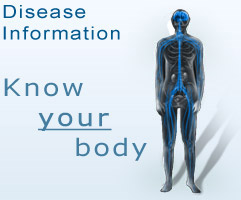Renal Calculi (Kidney Stones)
Kidney stones are a very common health concern. About 12% of men and 5% of women will have at least one kidney stone in their lifetime. Most kidney stones contain calcium. Other substances, such as oxalate, are necessary to remain in solution in the urine. Stones are typically caused by an imbalance in the urinary system; either as a result of too little water, too much oxalate or too much calcium. Stones are rarely related to too much calcium in the blood. There are also other types of stones that can develop, such as uric acid, magnesium ammonium phosphate or cystine stones.
There are some rare stone types that are inherited in families and are usually seen in children. Your physician can determine that you have a stone through various diagnostic tests. It might show on an x-ray of the abdomen, an ultrasound examination or by intravenous pyelography (IVP, a procedure where dye administered into a vein highlights the "road map" of the kidneys and urethras).
Living with your diagnosis
For most patients a stone is an isolated event. The small piece of calcium or uric acid travels down the urethra (the tube connecting kidney and bladder) and causes a cramping pain, typically in the flank (the side between ribs and hipbone), which may be severe. The discomfort may cause some patients to vomit, while others are simply aware of an ache in the groin. In some cases there is a history of a previous stone. In others, the stone does not cause many symptoms until it is complicated by infection. In this case, the patient will be quite ill with high fever, chills, pain in the side and may experience a burning sensation when urinating.
Treatment
Treatment depends on the location and size of the stone. Small stones may pass spontaneously within 24 - 48 hours. Larger stones may require shockwave therapy or, rarely, surgery to retrieve them. Once the problem has been treated, the main role is in preventing a recurrence. About 50% of patients will have another stone within five years of the first episode.
It is essential that you increase your fluid or water intake so that a dilute urine output is maintained, and "stagnation" does not occur. Urine that is as clear as water is a good indication that your fluid intake is sufficient.
As so many stones are formed because of an imbalance of calcium and oxalate, your doctor may treat you with high doses of calcium supplements (e.g. calcium carbonate) or dairy products. This therapy is effective and goes against the common belief that patients with a history of stones should avoid calcium in their diet. Depending on the type of stone you have, your physician may have to use other medication, such as hydrochlorothiazide (a diuretic) or allopurinol (a drug that reduces the formation of uric acid, which accounts for about 5% to 15% of stones).
Treatment side-effects
There are a few side-effects of the treatment. Calcium pills can be chalky and hard to swallow, but otherwise are well tolerated. Hydrochlorothiazide is a mild diuretic that can result in impotence (less than 20% of users), high cholesterol levels, high blood calcium levels, low potassium or magnesium or worsening diabetes. Allopurinol may rarely cause a rash or a lowering of blood cell counts.
If you undergo shockwave treatment, the stone will break up in the urethra and may cause some discomfort as it travels out. In isolated cases patients have developed hypertension after this therapy.
The do's
- Drink lots of water every day; one to two litres a day is recommended. If you have recurring stones, it is advisable to drink enough so that your urine looks as clear as water all the time.
- Take calcium supplements as recommended to avoid the "imbalance" that might exist.
- Take the preventive medication your doctor may prescribe, such as allopurinol or hydrochlorothiazide.
- Always ask questions regarding your treatment or any side-effects that you are experiencing.
- Remember to always take water with you, especially when exercising or working in hot weather.
The don'ts
- Don't get dehydrated.
- Don't forget to choose the food you eat with care. Your physician may suggest a diet rich in calcium and water. Some patients will have an animal protein restriction to avoid the production of too much uric acid, which can go on to form stones.
- Don't forget the medication prescribed to reduce the risk of further stones forming, such as calcium supplements, hydrochlorothiazide and allopurinol.
- Don't use painkillers in excess of the number prescribed by your healthcare provider, as they can accumulate and make you ill.
- Don't drink too much coffee or tea, as they can lead to further dehydration, especially in warm weather.
When to call your doctor
Call your doctor if:
- you experience fever or chills;
- you are not able to control the pain on the standard treatment;
- you are vomiting and unable to keep food down;
- you are unable to urinate; or
- urinating is painful or causes burning.
There may be some bleeding with a kidney stone. Call the doctor if it is persistent or you notice more blood in the urine.
References
1. UpToDate
2. Qualsa Guideline on Renal Calculi
 TransmedBanner4.jpg)

